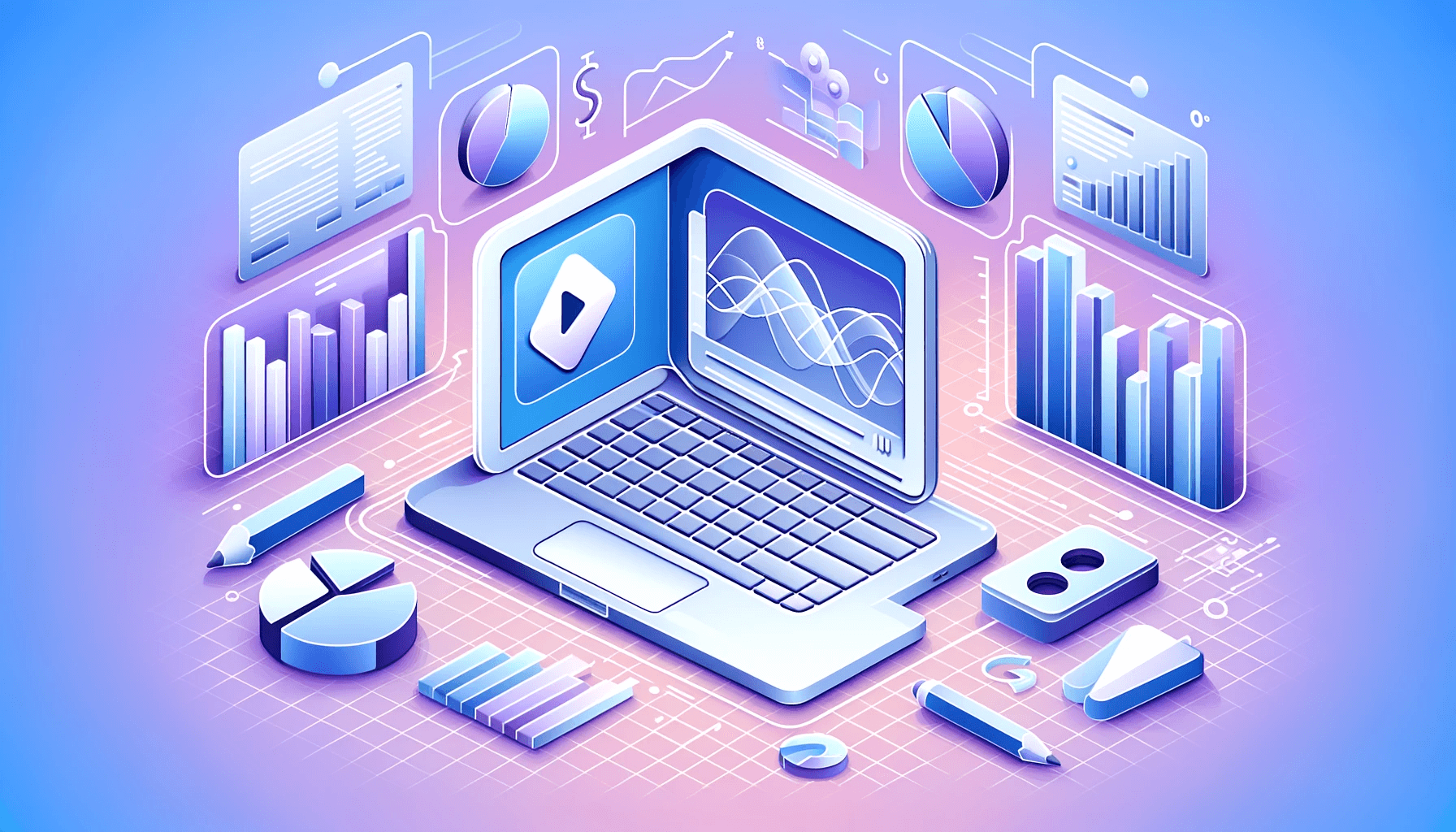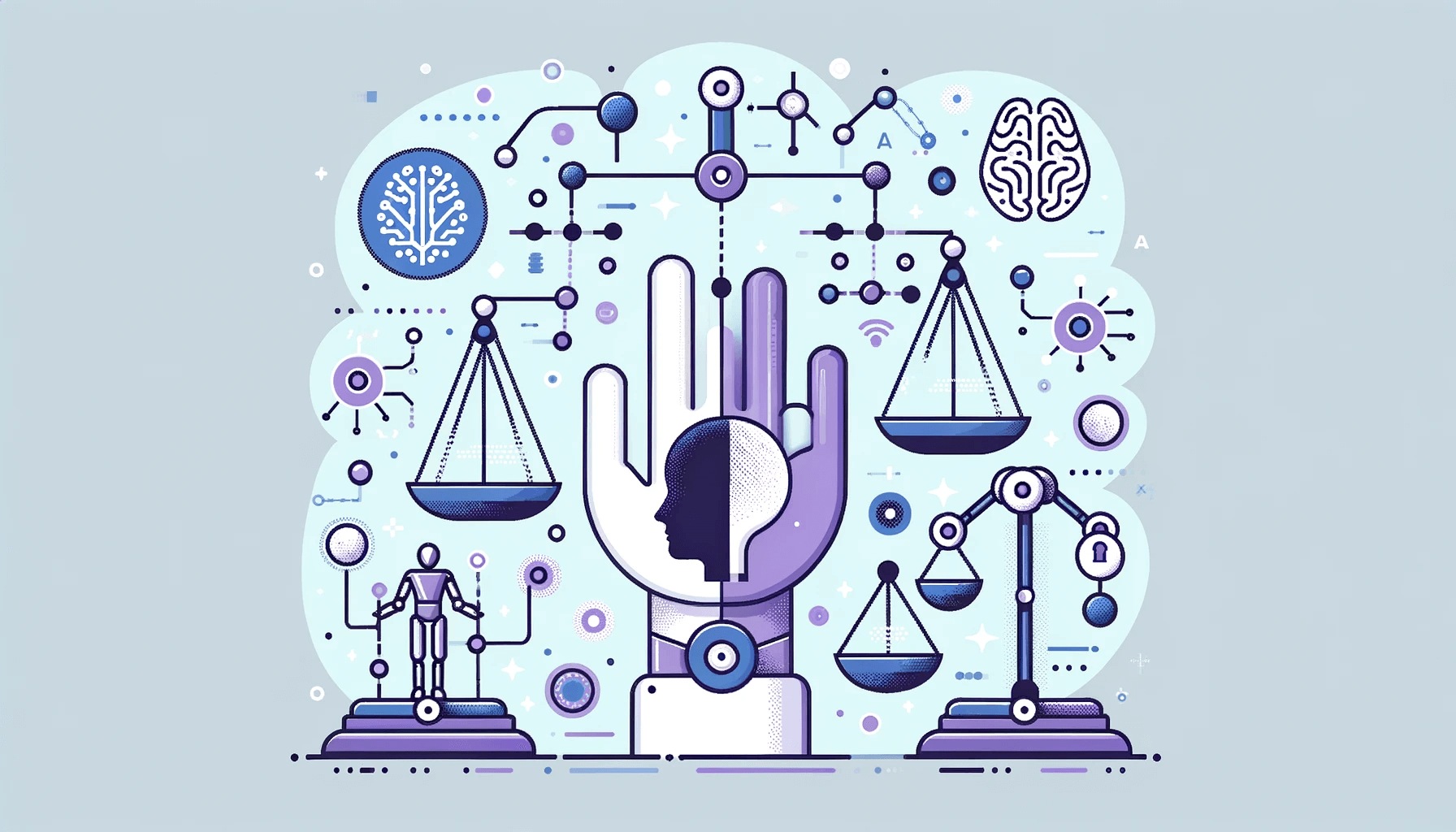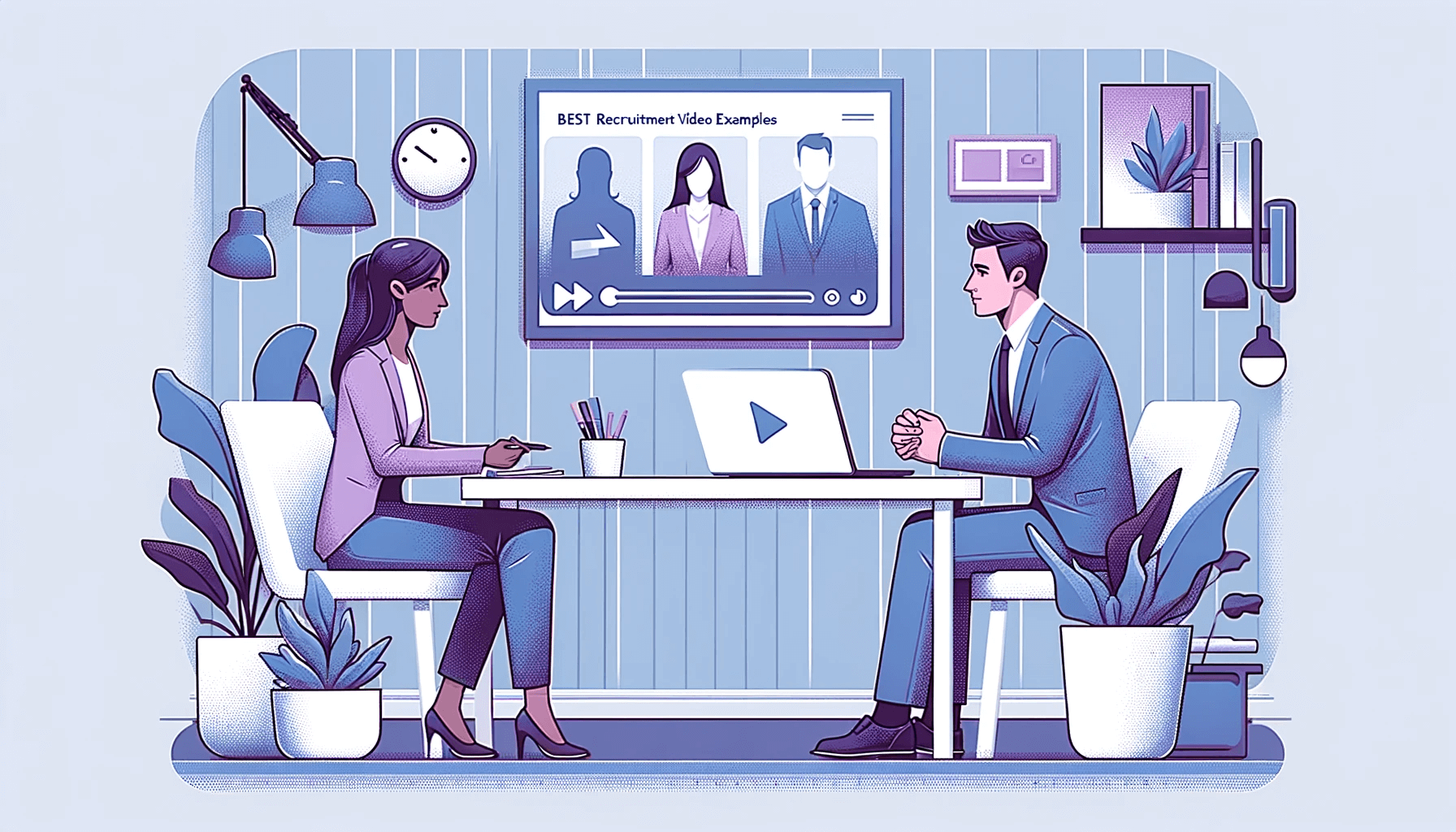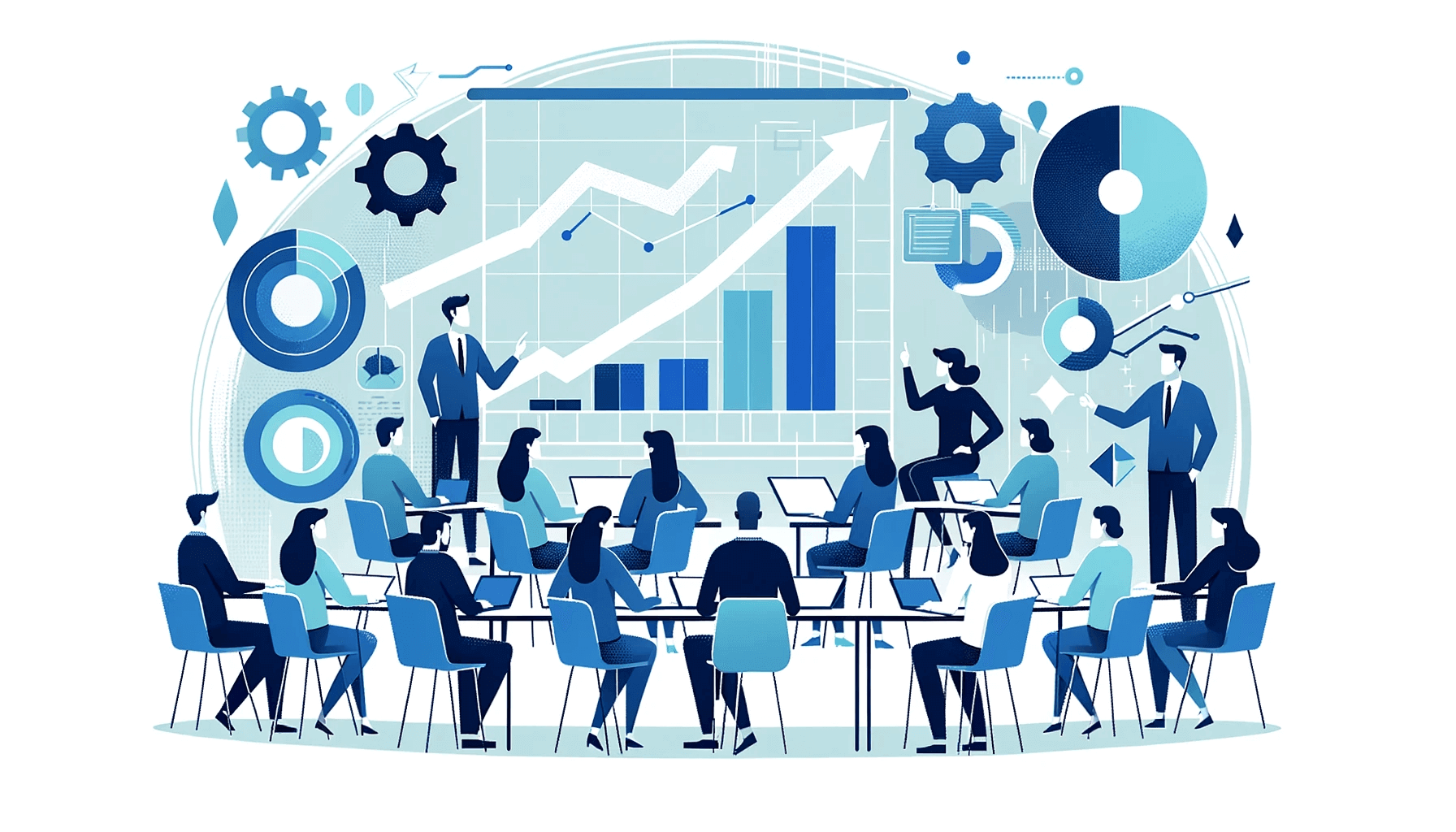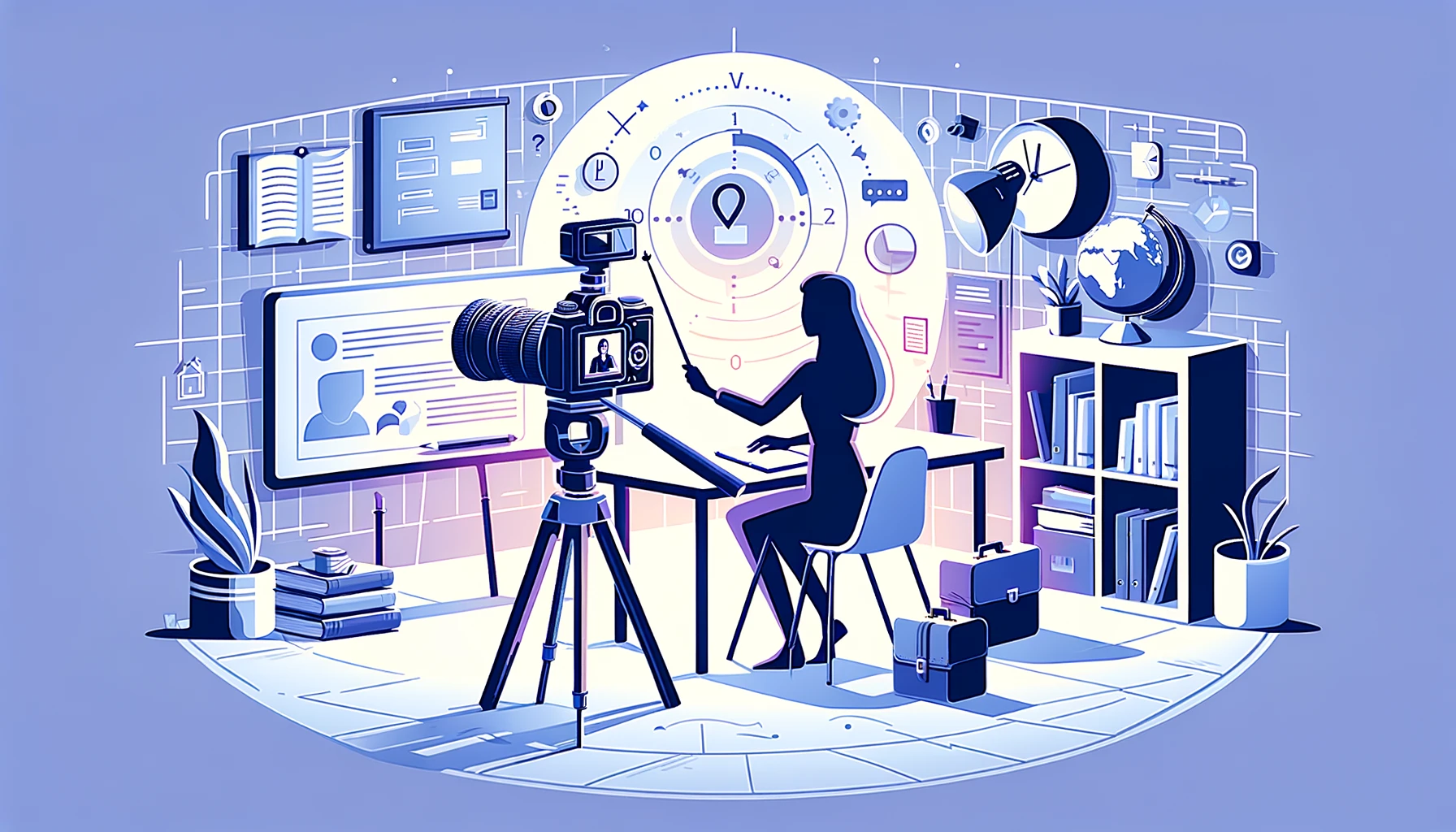
Create AI videos with 230+ avatars in 140+ languages.
HR departments across the globe are overwhelmed with time-consuming processes, often wasting time on routine tasks.
AI, however, facilitates systems that swiftly and efficiently handle the tedious, manual tasks that bog down HR. In short, AI enables the HR team to shift their focus from paperwork to people work.
Rather than a tool, AI is a force that redefines HR's role. It has the capacity to handle anything from automating the recruitment process to personalizing employee engagement strategies.
This blog post explores how artificial intelligence solves traditional challenges in this department, allowing HR professionals to excel and make their mark.
How useful is AI in HR?
AI makes HR teams more productive and effective. It leads to better decision-making and streamlines time-consuming, human-error-prone processes. And that's not just the "ideal." In fact, 93% of the companies that adopted automation for talent acquisition and management processes report significant time savings and improved efficiency.
AI software automates recruitment, onboarding/offboarding, and employee engagement tasks. Consequently, HR professionals get to focus on strategic roles and improve their people management skills.
It can also equip human resources with tools that significantly enhance employee experience. Human resource workers will easily foster a culture of continuous learning and support. Improvements like AI-generated content, 24/7 virtual support, or interactive experiences lower turnover rates.
How will AI impact the HR industry?
AI can change how HR functions contribute to the broader organizational objectives. It automates manual tasks to reduce costs and makes human resources more employee-centric. 66% of business leaders looking to boost efficiency and productivity think the solution is AI and automation.
Indeed, artificial intelligence can transform the HR field. The impact is clear on both operational efficiency and employee satisfaction. Using predictive analytics, AI tools streamline workforce planning and talent management. With AI help, companies make sure the right talent is in the right place at the right time.
In other words, AI technology will produce a shift in HR practices. Professionals in the field will have fewer tedious tasks and more resources to directly impact their company's success.
Use 1: Create AI videos for onboarding, recruiting, and internal comms
AI videos are the solution to getting your HR messages listened to and understood. Where emails, long PDFs, and instant messages are ignored, short-form video never fails to grab attention.
HR teams can create and customize a video for existing or new employees in mere minutes using generative AI and a web browser. Besides efficiency, they'll be able to personalize the onboarding process, improve internal comms, and scale to the entire organization.
AI adoption in video creation will remove time-consuming tasks associated with traditional production. Check out this example of a personalized AI video. You can duplicate and adapt it in minutes using the most popular AI video generator Synthesia.
Internal comm videos can be generated to update teams on key achievements and KPIs. Video is the perfect medium to make HR management announcements you don't want to go unnoticed. Like this one about moving an entire department to a new floor:
You can even generate custom AI avatars of real HR professionals or other employees (with their consent). Imagine having a digital double of key stakeholders at your disposal whenever you need them. Here's how this AI feature will change the game for an HR manager who does this:
Use 2: Translate communication in multiple languages for global teams
The workplace is global. Translating key HR documents into other languages fosters inclusivity and compliance. It means all employees can access important information in a language they understand. People feel accepted for who they are and managers communicate critical information in a way that's more likely to stick. It's a win-win.
The below example is an ad that demonstrates just how powerful seamless language shifts can be:
Translate videos, documents, and other content with generative AI. Offer multilingual support with HR technology like chatbots or real-time live meeting translation. Equally important, regularly review your AI-translated documents for accuracy and consistency.
An AI tool like Grammarly helps HR teams check grammatical errors in English content. It also means non-native speakers can write content more confidently. Beyond simple translation, the Google Translate API can help you integrate automated translations into HR systems.
Translating HR videos can be a quick and easy way to personalize content. Using an AI video translator like Synthesia, you can instantly translate any video's audio, in-video text, and even subtitles into 70+ languages.
Use 3: Facilitate training resources for ongoing employee support
On-demand and just-in-time training gives power to employees. It lets them grow their skills and adapt to new technology as needed. Therefore, they become more engaged and productive, driving organizational success. The cool part is that AI training resources can achieve all this.
AI-generated text, audio, or videos are suitable for teaching hard and soft skills, compliance, and internal procedures. L&D and HR professionals even develop interactive, AI-powered training modules. These include quizzes, gamification, and branching scenarios that adapt to the learner's pace. And they are more effective because they provide instant feedback and increase engagement.
Check out this EasyGenerator course that teaches viewers how to use the AI eLearning tool EasyGenerator to create interactive training materials.
For more resources in this direction, you can look into:
- LinkedIn Learning: Uses AI to suggest courses based on job roles and industry trends.
- Coursera: Provides AI-enhanced learning experiences that adjust to individual learning styles.
- Kahoot!: Makes learning fun and interactive with game-based learning elements.
Use 4: Assist employees with career pathing
Useful AI tools for work are constantly emerging to help people climb the corporate ladder. They conduct performance reviews and analyze them to identify skill gaps and suggest upskilling or reskilling opportunities. They can also make human resources more capable.
70% of workers aren't actively looking for a new job, but they'd consider a switch if the right offer came along. That's a dangerous statistic for you in a competitive talent marketplace.
As Mark Zuckerberg said, "Treat your employees right so they won't use your internet to look for new jobs."
You can let your competitors tempt your employees away. Or you can have your HR teams implement AI technology to recommend steps to grow in their careers at your company.
In addition to job opportunities, AI software can match employees with internal mentors—not any people, but those who have already successfully navigated similar career paths. Automating that initial connection will relieve some pressure on HR staff. It will also improve internal networking while reducing knowledge gaps or gatekeeping.
A few AI tools to experiment with include IBM Watson Career Coach and Bumble Bizz. They offer personalized career guidance and suggestions based on AI analysis and match employees for networking and mentorship. Simudyne, a simulation technology at its core, can be adapted for career path exploration.
Use 5: Strategize workforce planning
Effective workforce planning means organizations have the right number of people with the right skills at the right time. AI-powered HR technologies can help make smart hiring decisions. They predict personnel needs, forecast turnover, and identify emerging workforce trends in a constantly shifting reality of remote work. It literally helps your business stay ahead in a competitive landscape.
A tool like Workday Adaptive Planning offers workforce planning with AI-driven analytics. HR professionals use it to analyze workforce data, project growth, and predict future hiring to fill skills gaps. Then, there's Gurobi, an optimization platform that can be used for complex workforce scenario planning.
For your workforce planning, the above AI tools also help:
- Identify patterns that indicate a turnover risk.
- Suggest interventions to increase retention rates.
- Scan external job market trends, including in-demand skills and roles.
- Align your hiring strategy with industry trends.
- Simulate various business conditions (e.g., rapid growth, downsizing) with AI scenario planning tools.
- Anticipate the impact of changing conditions on workforce needs.
Another option is LinkedIn Talent Insights. This one informs your workforce planning strategy by leveraging vast data on employment trends.
AI algorithms excel at decision-making. They efficiently match candidates' skills and experience with job requirements, improving the accuracy of candidate selection. Meanwhile, AI chatbots enhance candidate interaction. They answer questions and collect information, making the application experience more engaging.
But AI even further refines the recruitment process. Basically, it ensures that only the right candidates are matched to open positions. It keeps potential candidates informed about their application status. And can even schedule and coordinate interviews between candidates and hiring managers.
Popular recruitment tools for HR teams that use AI include:
- Kore.ai: Conversational AI platform where companies can engage with and screen candidates.
- DeepSense.ai: Screens candidates' social media profiles to assess job fit.
- HireVue: The most popular option for full-service candidate screening whose TechTarget review you can check out here.
Use 7: Assess and improve cultural fit during hiring and team formations
Cultural fit between candidates and the company improves team cohesion, job satisfaction, and productivity. AI can objectively assess employee data for cultural alignment. Then, it recommends team formation strategies that prioritize compatibility.
Culture Amp uses machine learning to analyze survey results for cultural insights. Similarly, Plum provides a talent resilience platform that includes team compatibility assessments. They're both great at allowing recruiters to:
- Assess a candidate's values, behavior, and preferences against your company culture.
- Survey and analyze workers' current perceptions of your company culture.
- Identify core values and behaviors of different employees.
- Predict how well potential hires or new team members will mesh with the existing team dynamics.
- Suggest job descriptions and team formations based on cultural compatibility, work styles, and communication preferences.
Use 8: Streamline performance management and employee reviews
Employee development and organizational growth require continuous performance monitoring and structured reviews. AI gives HR leaders and other stakeholders real-time performance insights. It also automates feedback collection and personalizes development plans based on individual performance reviews.
With an AI tool like Lattice, you can integrate artificial intelligence to provide actionable insights in multiple directions. It can look at employee performance and goal accomplishments and even track peer feedback. Their recent press release goes deep into the platform's AI capabilities.
Alternatively, 15Five creates feedback and check-ins, enhancing performance review processes. And Cornerstone OnDemand delivers AI-powered learning and performance suggestions tailored to individual employee needs.
Some AI systems can regularly gather performance feedback from peers, customers, and managers. After analyzing data, the AI system recommends personalized training programs and career development paths. It can also predict future performance trends and potential skill gaps.
Use 9: Provide 24/7 virtual support with chatbots
By implementing chatbots for 24/7 virtual HR support, organizations can significantly increase employee satisfaction and streamline HR operations. An AI chatbot uses natural language processing and machine learning to understand, interpret, and respond to user queries. The fascinating thing is that it does so in a natural and context-aware way.
Chatbots make information access quicker and more efficient. Next to always being available, they bring many other key benefits:
- Provide HR teams the support to talk in any language.
- Give new hires instant responses to common employee questions.
- Recognize when to escalate complex issues to human HR representatives for personalized assistance.
Candidate-facing chatbots are virtual assistants, too, but they're being used differently than recruitment chatbots. They start gathering information before someone submits their CV. So, they're the ultimate talent attraction assistant.
To top it off, chatbots can act as brand ambassadors. They'll chat with any potential candidate who visits your website or social media networks. And they'll offer information to lure them into the application process.
Some artificial intelligence services that help you implement and configure chatbots for HR are:
- Intercom: Offers chatbots that can be customized for HR support, integrating with existing HRIS.
- IBM Watson Assistant: Provides AI-powered chatbots with advanced NLP capabilities to create sophisticated virtual HR assistants.
- Zendesk Chat: Builds chatbots for various support scenarios, including HR, and offers integration with multiple languages and HRIS platforms.
Use 10: Implement AI-driven wellness programs
56% of people who participate in company wellness programs have fewer sick days. Clearly, these programs pay off, and AI can help you get them up and running. Use them to improve employee productivity and satisfaction while building a culture of health and wellness.
These applications include chatbots that remind you of wellness activities. But also bots that provide immediate, confidential mental health support. Another exciting use is tracking and analyzing stress levels and other health metrics to offer customized fitness and nutrition plans.
Here's a quick explanation of how Welltech connects wellbeing with technology for AI-driven corporate wellness:
Sentiment analysis on employee communications identifies stress or mental health issues early, enabling timely support. 30% of workers say these programs detected a disease they had and were able to begin treatment before it progressed.
On the same prevention side, AI algorithms can analyze images or videos of workspaces. Based on that analysis, they suggest ergonomic improvements to reduce the risk of strain and injury.
Mental health support chatbots like Woebot may not replace human therapists very soon, but AI health and wellness tracking like Fitbit Health Solutions is getting surprisingly accurate.
Empower your HR to create AI videos for internal comms
Want to turn your HR communication into compelling videos that employees are eager to check out and act upon?
AI is the solution for turning the piles of written documents HR struggles with daily into concise and engaging videos. This is done with minimal effort and without requiring any video production experience or equipment.
Use this free AI video generator and see what it's like to create HR videos from plain text in minutes.
About the author
Content Writer & Marketing Expert
Ema Lukan
Ema Lukan is a seasoned Content Writer and Marketing Expert with a rich history of collaborating with marketing agencies, SaaS companies, and film studios. Her skill set encompasses copywriting, content creation, and a profound understanding of the intricate fabric of brand identity. Ema distinguishes herself not merely as a wordsmith but as a storyteller who comprehends the power of narratives in the digital landscape. Fascinated by new technologies, she navigates the evolving marketing terrain with creativity and analytical precision, leveraging data to refine strategies. Her passion lies in crafting compelling stories that resonate, always mindful of the ever-changing dynamics in the digital world and the culture shaping it.







